|
|
|||||||||||||||||||||||||
|
We have refurbished (repaired) FTIR spectrometer KBr beamsplitters to near “new condition”, where we use the old mount, remove the old optics and replace it with new KBr beamsplitter optics) We can convert KBr beamsplitters to ZnSe beamsplitters to avoid moisture damage problems. This is important in cases where one can not control the moisture in the FTIR bench. That is true when an instrument is moved a lot or it is powered off a lot. A powered on FTIR bench (warm inside) will have the relative humidity below 40%. The KBr does not fog from moisture at a relative humidity below 40%. It is best to keep your FTIR powered on over long weekends or when you are away on vacation/holidays. We can provide KBr, ZnSe, and CaF2 beamsplitters. All Makes and Models can be repaired no matter how damaged.
We have also provided KBr beamsplitters for femtosecond laser applications.
Repair procedure: We require the metal beamsplitter mounts (frame). We then replace the beamsplitter optical elements with new optics. These refurbished beamsplitters meet and often exceed the original performance specifications. The current multi-coatings on the KBr beamsplitter optics are better than they were in years past. That is especially true for older FTIR spectrometers. We can provide mounts in some situations.
Pricing: We will provide a quotation at your request. You will find that our pricing is less than that offered by the original manufacturer. Many FTIR manufacturers do not support old FTIR spectrometers. We can refurbish all various beamsplitters for old FTIR spectrometers.
Below are some photos of beamsplitters which have been repaired. We have repaired or refurbished some pretty obscure FTIR beamsplitters. The Digilab FTS-25 is old and the photo below shows the interferometer and its beamsplitter.
Let me add that it is not always possible to notice the damage to the beamsplitter. A perfectly good looking beamsplitter often will not allow the mirror to scan or it produces poor energy performance in the spectral range above 2000 cm-1. A good beamsplitter should give 20% or better performance at the 4000 cm-1 crossing point compared to the maximum energy at around 2000 cm-1 in the single beam spectrum (background).
Call us if you have questions about your beamsplitter’s performance. We will look at your single beam spectrum and give you our opinion. We are here to help.
Call: 603 886-5555
Email: info@ftir.com |
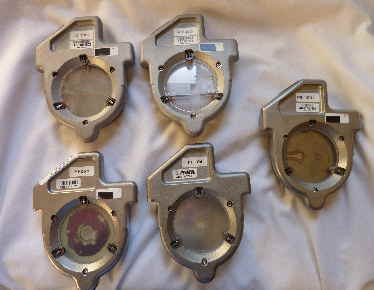 |
|||
 |
|||
|
Thermo Nicolet FTIR Protege, Magna, Nexus KBr Beamsplitters. Off-axis Beamsplitter is the one to the right in both photos. Notice the degree of damage. |
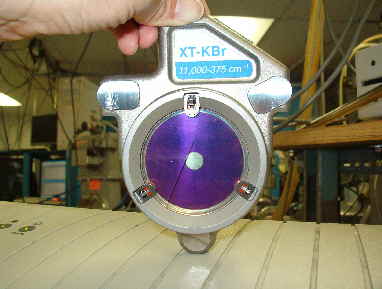 |
|
Thermo/Nicolet XT-KBr (extended range) Beamsplitter |
 |
|||||
|
Nicolet 20SX KBr Beamsplitter
|
|||||
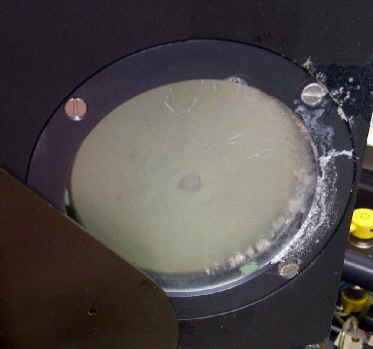 |
|||||
|
Nicolet 800, Nicolet 500 series and Nicolet Impact 400 Series KBr Beamsplitter |
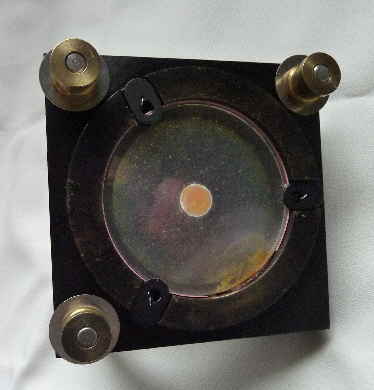 |
|
Bio-Rad/Digilab QS (quality control in semiconductor applications, FTS 40, FTS 45, FTS 60, FTS 65, and all FTS newer series FTIR KBr beamsplitters |
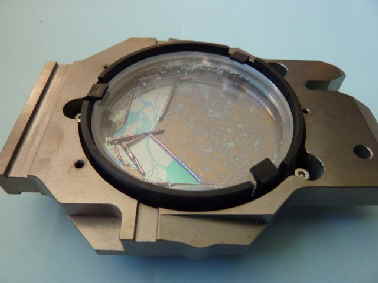 |
|||||
|
Digilab FTS 25 KBr Beamsplitter
|
|||||
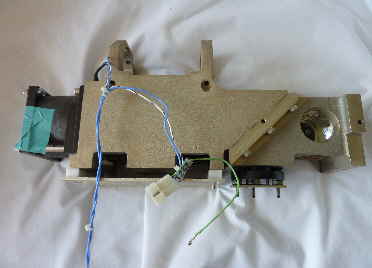 |
|||||
|
Digilab FTS 25 Interferometer
|
|||||
|
Don’t worry if you have not seen your beamsplitter. We can refurbish most any beamsplitter you may have. Call us at 603 886-5555 or email us at afuller@ftir.com for more information. |
| [Home] [New - FTIR Gas Analyzer] [Google Site Search] [FCM (FTIR Collection)] [Active Gas Analyzer] [In-situ Analyzer] [Process Analyzer] [Fiber Optics Systems] [Short Path Gas Cell] [Long Path Gas Cell] [Optical Elements] [Repair of Beamsplitters] [Windows] [Beamsplitter Repair] [O-Rings and Seals] [Gas Quant Libraries] [Repair Used Equipment] [About] [Contact] [Privacy Statement] [Training and Consulting] |